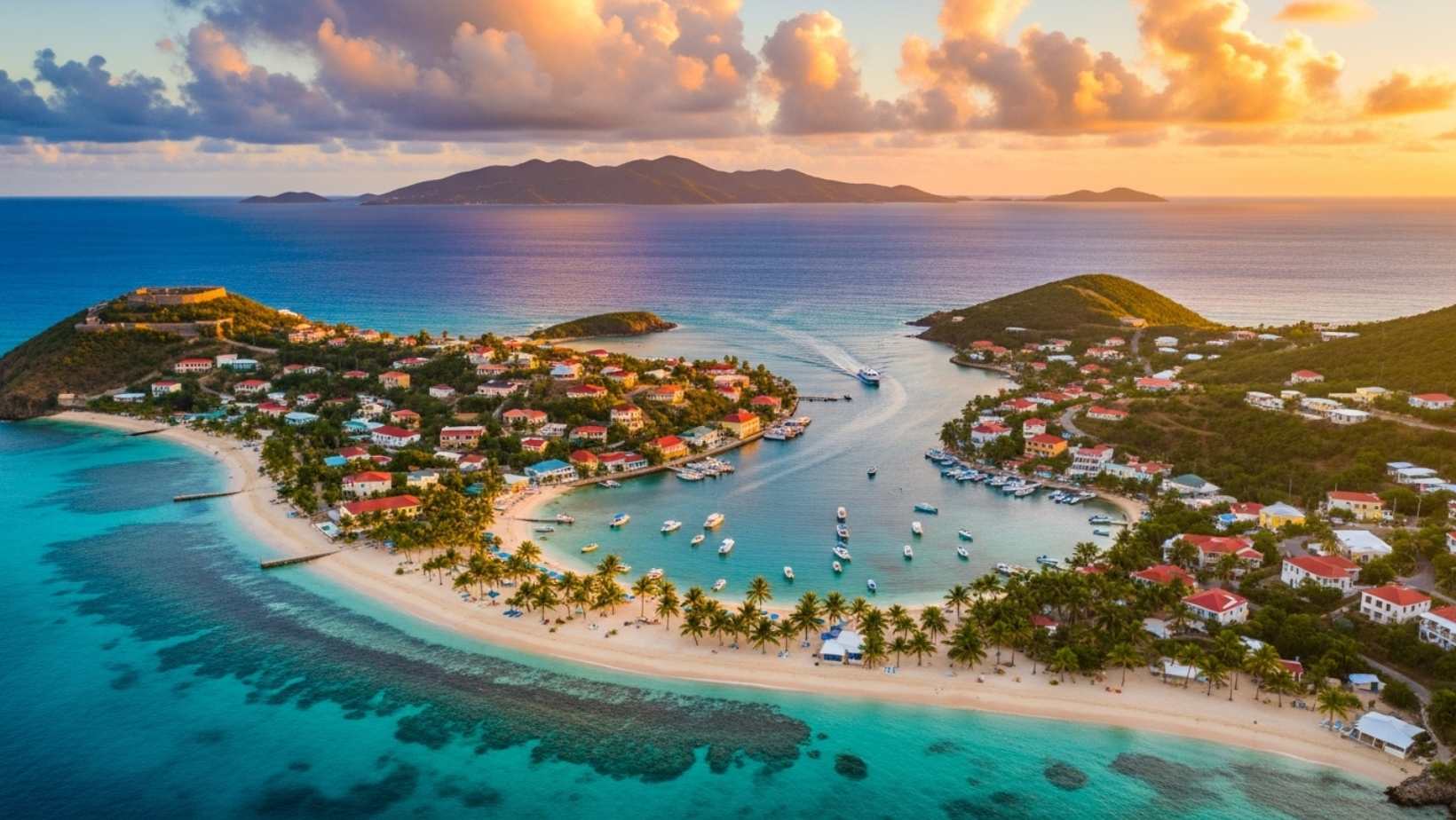Tucked away in the Caribbean Sea lies a 491-acre sanctuary where massive cruise ships physically cannot anchor, creating an authentic island experience that neighboring territories lost decades ago. With only 164 permanent residents maintaining its pristine beaches and coral reefs, this U.S. Virgin Islands territory operates like a private Caribbean retreat where locals enjoy prices 40% lower than the tourist-packed capital just across the channel.
The smallest inhabited member of the U.S. Virgin Islands didn’t even officially join the territory until 1996, when the federal government transferred ownership from the Department of Defense. Today, Water Island remains the Caribbean’s best-kept secret, accessible only by a seven-minute ferry ride from Crown Bay Marina in St. Thomas.
Unlike Charlotte Amalie’s crowded Paradise Point tramway or the duty-free shopping chaos of Main Street, this quiet island maintains the Caribbean atmosphere that existed before cruise tourism transformed the region.
You’ll discover why cruise ships can’t physically reach this protected paradise
Water Island’s geography creates a natural barrier against mass tourism that money can’t overcome. The surrounding waters are too shallow for cruise vessels, and the protected harbor lacks the deep-water infrastructure required for large ships. Even medium-sized vessels struggle with the approach channels, which maintain depths of only 15-20 feet in most areas.
The island’s single dock at Phillips Landing accommodates only small ferries and private boats under 50 feet. This limitation isn’t a disadvantage—it’s precisely what preserves the island’s character. Without cruise terminals, Water Island avoided the fate of other Caribbean destinations where thousands of passengers descend daily.
Fort Segarra, built during World War II to protect submarine bases, now serves as a hiking destination rather than defending against naval threats. The underground tunnels and concrete bunkers remind visitors that this island once played a strategic military role, far removed from today’s peaceful beaches where sea turtles nest undisturbed.
You’ll experience authentic island life where 164 residents control their paradise
The residents of Water Island operate their community like an extended family, maintaining traditions that larger islands abandoned for tourism dollars. Dinghy’s Beach Bar, the island’s social hub, serves fresh catch at prices that would seem impossible in St. Thomas. Here, a cold Presidente costs $3 instead of the $8 charged at Charlotte Amalie’s waterfront establishments.
Honeymoon Beach, consistently ranked among the Caribbean’s finest, remains uncrowded even during peak season. The beach’s coral reef sits just 30 feet from shore, offering snorkeling conditions that rival expensive guided tours elsewhere. Local kids still catch lobsters by hand in the rocky areas, selling them to neighbors for Sunday dinners rather than tourist restaurants.
The island’s single road, barely two miles long, connects scattered homes where residents grow mangoes, papayas, and key limes in their yards. Golf carts outnumber cars 10 to 1, and everyone waves when passing—a simple gesture that vanished from St. Thomas decades ago.
You’ll save 40% compared to St. Thomas while enjoying superior beaches
Water Island’s economic reality defies Caribbean tourism logic. Vacation rentals here average $150 per night for properties that would cost $250 in Red Hook or $400 in Charlotte Amalie. The island’s grocery boat delivers supplies twice weekly, keeping prices reasonable despite the logistics.
Property taxes remain 40% lower than St. Thomas, a benefit passed to renters through reduced accommodation costs. Even day visitors save significantly—the ferry costs just $10 round-trip, compared to $65 for similar island-hopping experiences elsewhere in the Caribbean. Beach chairs rent for $5 daily at Honeymoon Beach, while Magens Bay charges $25 for the same privilege.
The island’s restaurants, limited to three casual spots, serve lobster rolls for $18 that would cost $35 at Crown Bay’s marina restaurants. This pricing structure exists because Water Island doesn’t cater to cruise passengers with limited time and unlimited budgets.
Water Island proves that the Caribbean’s most valuable treasures aren’t always the most accessible. By remaining physically impossible for cruise ships to reach, this 164-person community preserved something priceless: an authentic island experience where locals and visitors share paradise equally, at prices that make sense for both.
